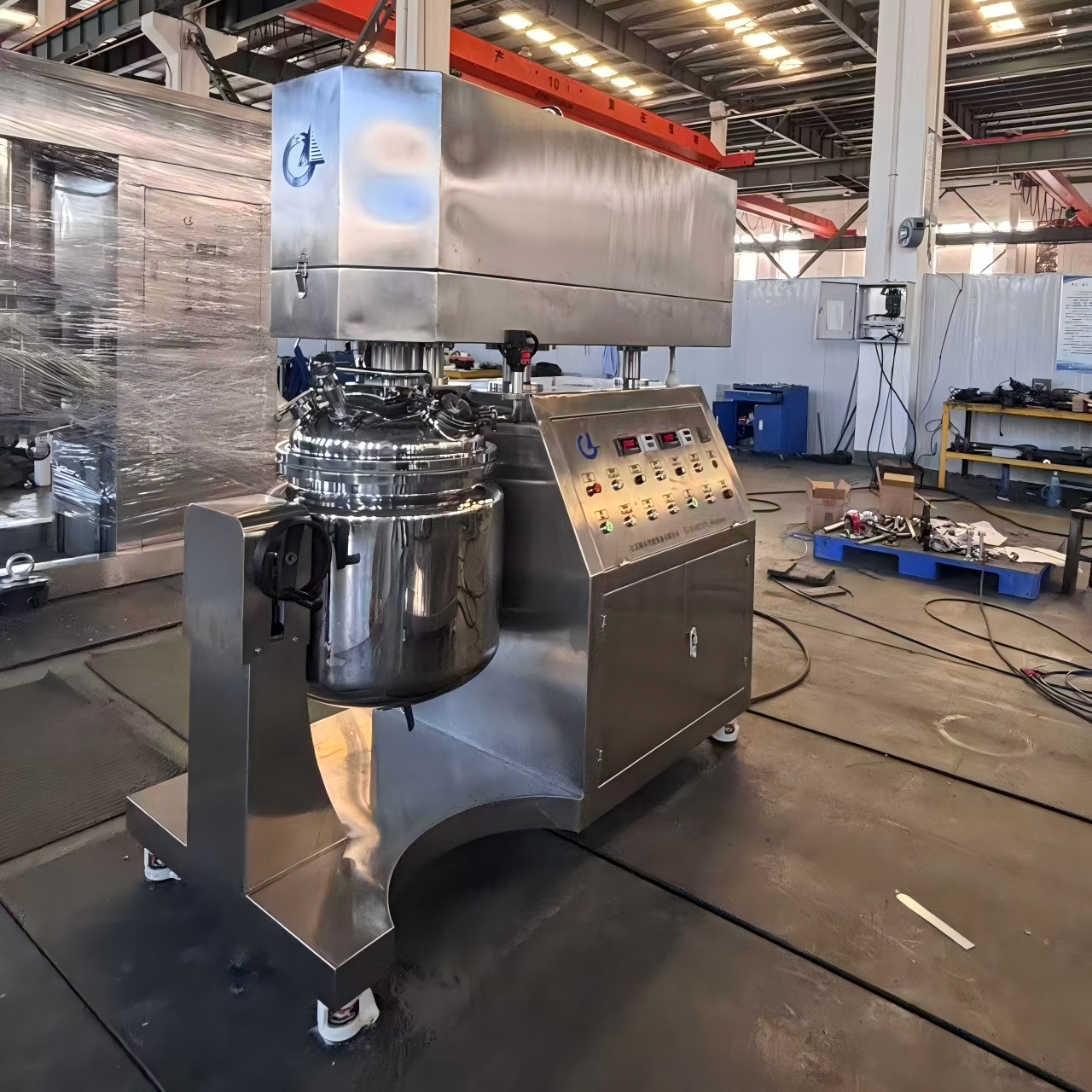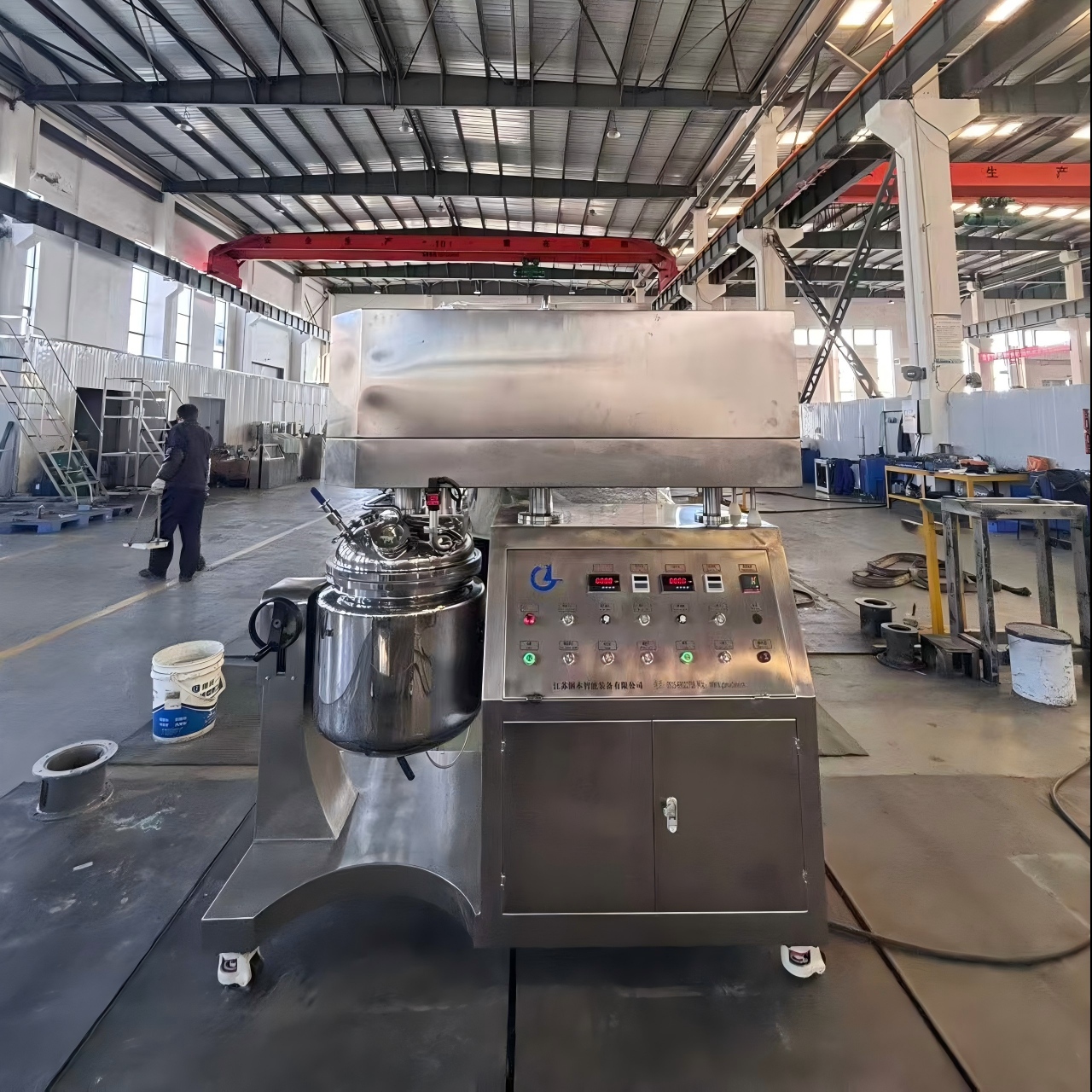From Concept to Reality: The Vacuum Emulsifying Homogenizer’s Journey to Shape Manufacturing’s Future
The vacuum emulsifying homogenizer stands as a testament to the evolution of manufacturing technology, bridging the gap between innovative concepts and industrial reality. This versatile machine has redefined product formulation across industries—from cosmetics and pharmaceuticals to food and chemicals—by enabling precise control over mixing, emulsification, and homogenization processes. Its journey from a theoretical concept to an indispensable tool in modern manufacturing highlights its transformative impact on efficiency, quality, and sustainability.
The Genesis: From Theory to Prototype
The inception of the vacuum emulsifying homogenizer stemmed from the need to address inefficiencies in traditional mixing methods. Early industries relied on basic stirrers or high-shear mixers, which often resulted in inconsistent product quality, air entrapment, and prolonged processing times. Engineers and scientists thus envisioned a system that could:
Eliminate air bubbles under vacuum conditions to enhance product stability
Combine high-shear mixing with homogenization for uniform particle size distribution
Integrate multiple processes (heating, cooling, mixing) into a single unit to streamline production
The first prototypes incorporated vacuum chambers, rotating impellers, and scraper systems to tackle these challenges. Early iterations focused on cosmetics and pharmaceuticals—sectors where product consistency and sterility were of paramount importance.
Technological Advancements: Refining the Design
Over decades, advancements in materials science, automation, and control systems have propelled the evolution of the vacuum emulsifying homogenizer:
Vacuum Technology: Improved pumps and seals now enable deeper vacuum levels, significantly reducing oxidation and contamination risks.
Homogenization Mechanisms: High-speed rotor-stator systems and ultrasonic attachments have enhanced particle refinement—critical for producing nanoemulsions used in cosmetics and vaccines.
Automation & Control: PLC (Programmable Logic Controller) systems allow real-time adjustments to temperature, speed, and pressure, ensuring batch-to-batch reproducibility.
Materials: The adoption of stainless steel and corrosion-resistant coatings has expanded the machine’s applications into harsh chemical processing environments.

Industrial Applications: Transforming Key Sectors
The homogenizer’s adaptability has made it a cornerstone in multiple industries, driving innovation in product development:
Cosmetics: It creates stable lotions, creams, and serums with uniform texture, eliminating separation and extending shelf life.
Pharmaceuticals: It enables the sterile production of ointments, gels, and injectables, ensuring compliance with stringent GMP (Good Manufacturing Practices) standards.
Food & Beverage: It processes sauces, mayonnaise, and dairy products, improving viscosity control and flavor consistency while preserving nutritional value.
Chemicals: It homogenizes adhesives, paints, and lubricants, reducing material waste and lowering overall energy consumption.
Sustainability & Efficiency: A Green Manufacturing Ally
Modern vacuum emulsifying homogenizers play a pivotal role in advancing sustainable manufacturing practices:
Energy Efficiency: Reduced processing times and optimized mixing cycles lower power consumption compared to traditional equipment.
Waste Minimization: Precise process control minimizes batch overruns and inconsistencies, cutting down on material waste.
Closed-Loop Systems: Vacuum environments prevent the emission of volatile organic compounds (VOCs), aligning with global eco-friendly manufacturing goals.
Future Horizons: Innovation Driving Tomorrow’s Industries
The vacuum emulsifying homogenizer’s role in shaping the future of manufacturing is set to expand, fueled by emerging industry needs:
Advanced Materials: The rise of nanotechnology and biodegradable formulations demands ultra-fine emulsification capabilities—an area where the homogenizer excels.
Personalized Medicine: Tailored drug delivery systems (e.g., targeted creams, oral emulsions) require scalable, high-precision mixing, which the machine can provide.
Smart Manufacturing: Integration with IoT (Internet of Things) and AI (Artificial Intelligence) will enable predictive maintenance, real-time process optimization, and remote monitoring.
Emerging Sectors: Fields like cannabis extract processing, lab-grown meat production, and sustainable packaging materials increasingly rely on the homogenizer’s innovative mixing solutions.
A Pillar of Modern Production
The vacuum emulsifying homogenizer exemplifies how theoretical innovation, when paired with engineering excellence, can revolutionize industries. By enabling precise, efficient, and sustainable production, it has become a cornerstone of advanced manufacturing. As industries evolve, this machine will continue to adapt—driving new possibilities in product development and quality. Its journey from concept to reality underscores its enduring relevance in shaping the future of global manufacturing.
News
- Latest News
- Solutions
- FAQ
Recommend Products
-
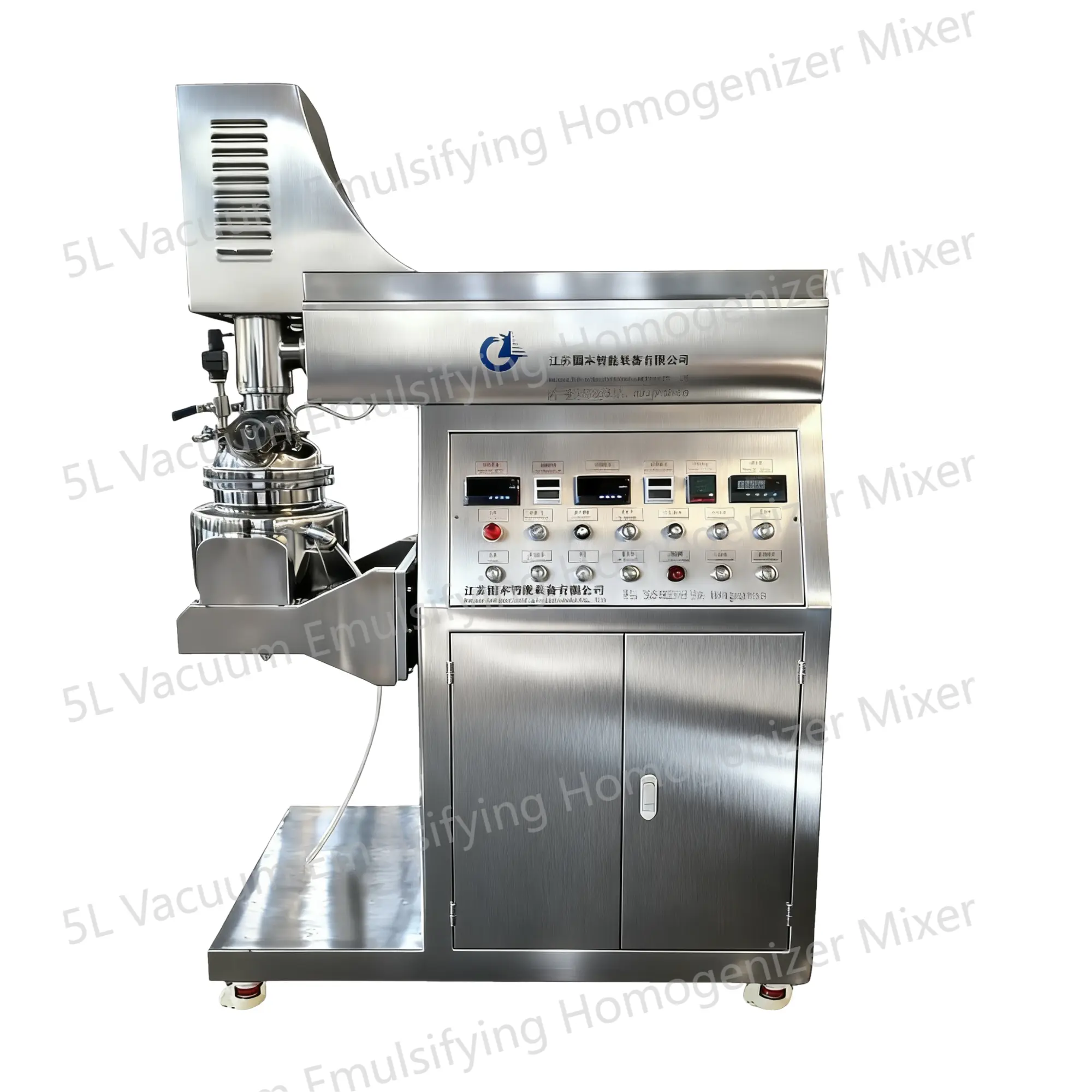 5L Vacuum Emulsifying Homogenizer Mixer
5L Vacuum Emulsifying Homogenizer MixerThe 5L vacuum emulsifying mixer is a device designed for emulsifying and mixing various substances in a vacuum environment. This equipment is equipped with a mixing tank with a capacity of 5 liters and is widely applied in industries such as food, pharmaceuticals, cosmetics, and pesticides.
-
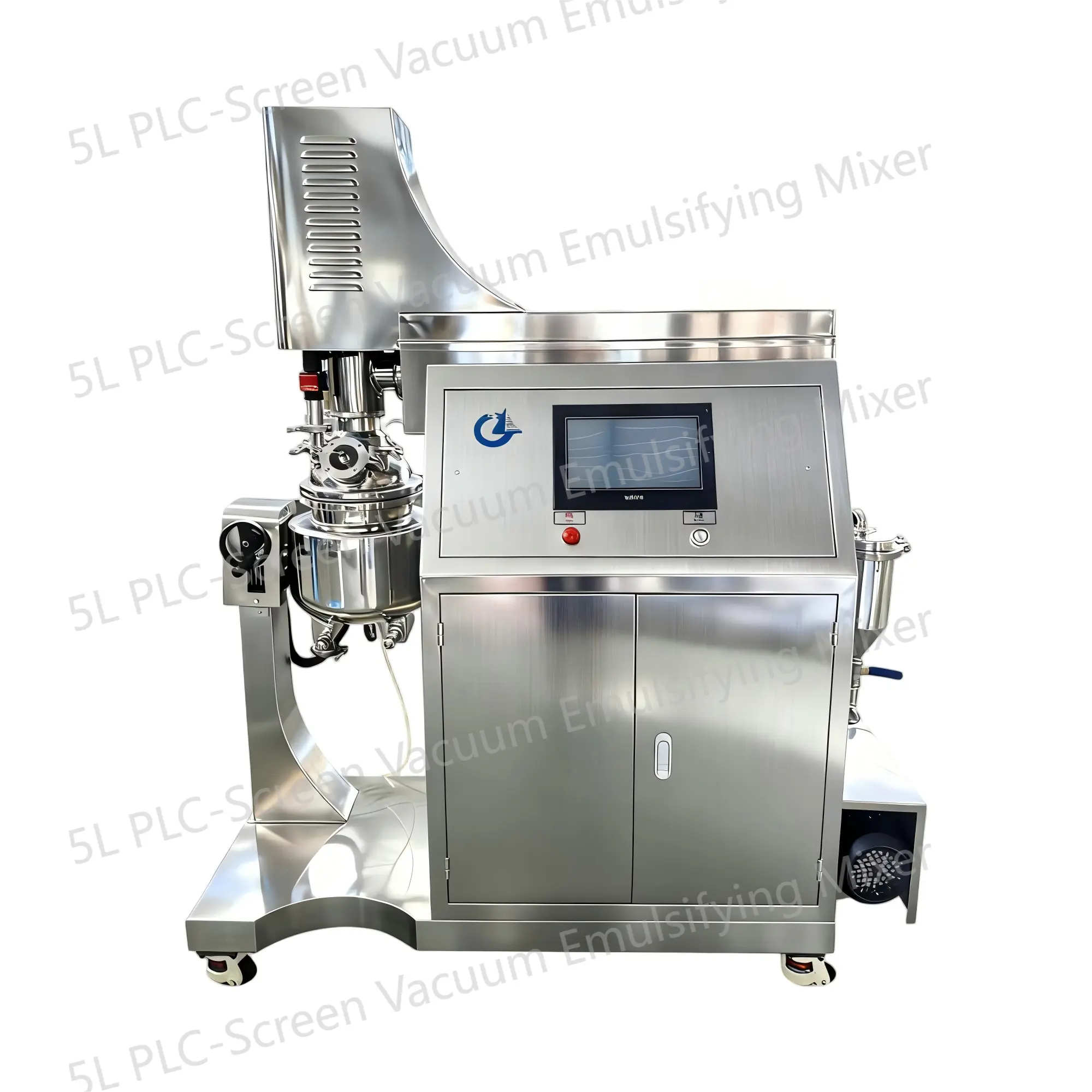 5L PLC-Screen Vacuum Emulsifying Mixer
5L PLC-Screen Vacuum Emulsifying MixerThe 5L PLC-Screen Vacuum Emulsifying Mixer is a device designed for emulsifying and mixing various substances in a vacuum environment. This equipment is equipped with a mixing tank with a capacity of 5 liters and is widely applied in industries such as food, pharmaceuticals, cosmetics, and pesticides.
-
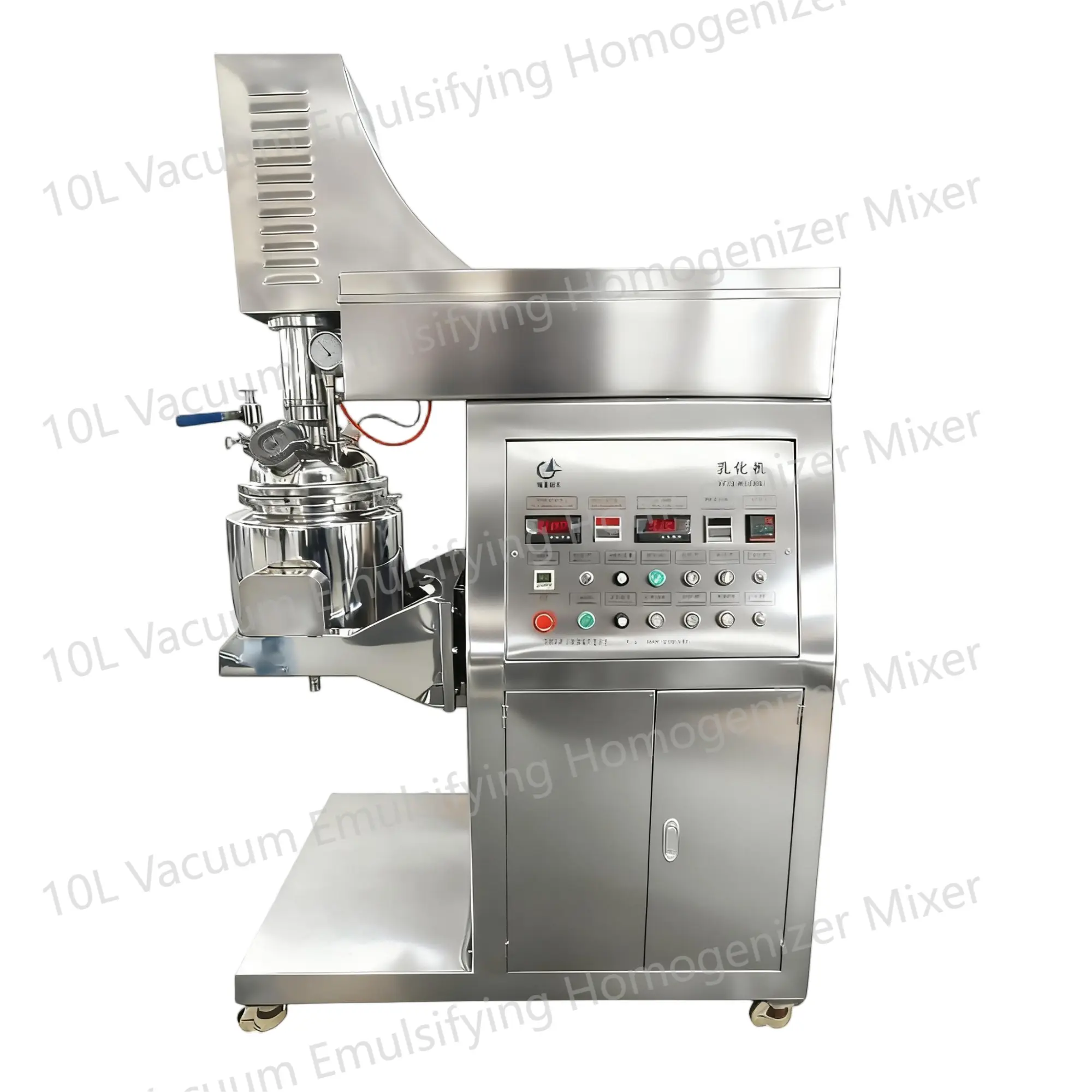 10L Vacuum Emulsifying Homogenizer Mixer
10L Vacuum Emulsifying Homogenizer MixerThe 10L Vacuum Emulsifying Mixer is a device used for emulsifying and mixing various substances in a vacuum environment. It is commonly used in industries such as food, cosmetics, and pharmaceuticals.


 English
English Russian
Russian French
French Spanish
Spanish Portuguese
Portuguese Korean
Korean Japanese
Japanese Thai
Thai